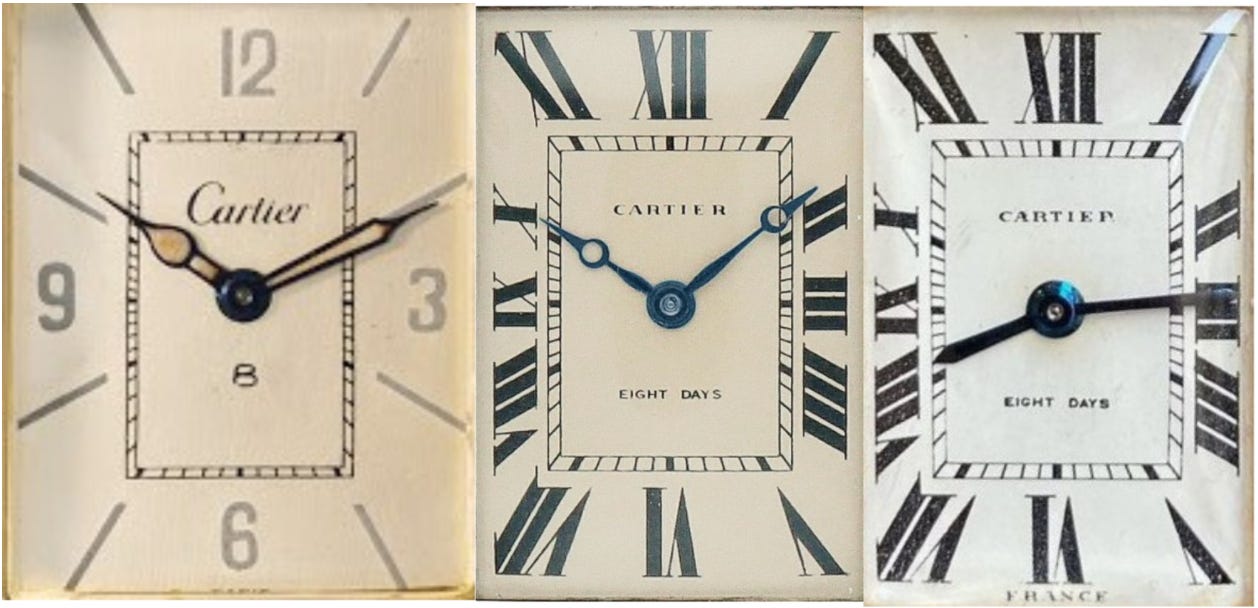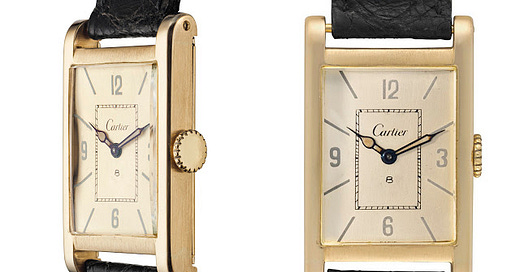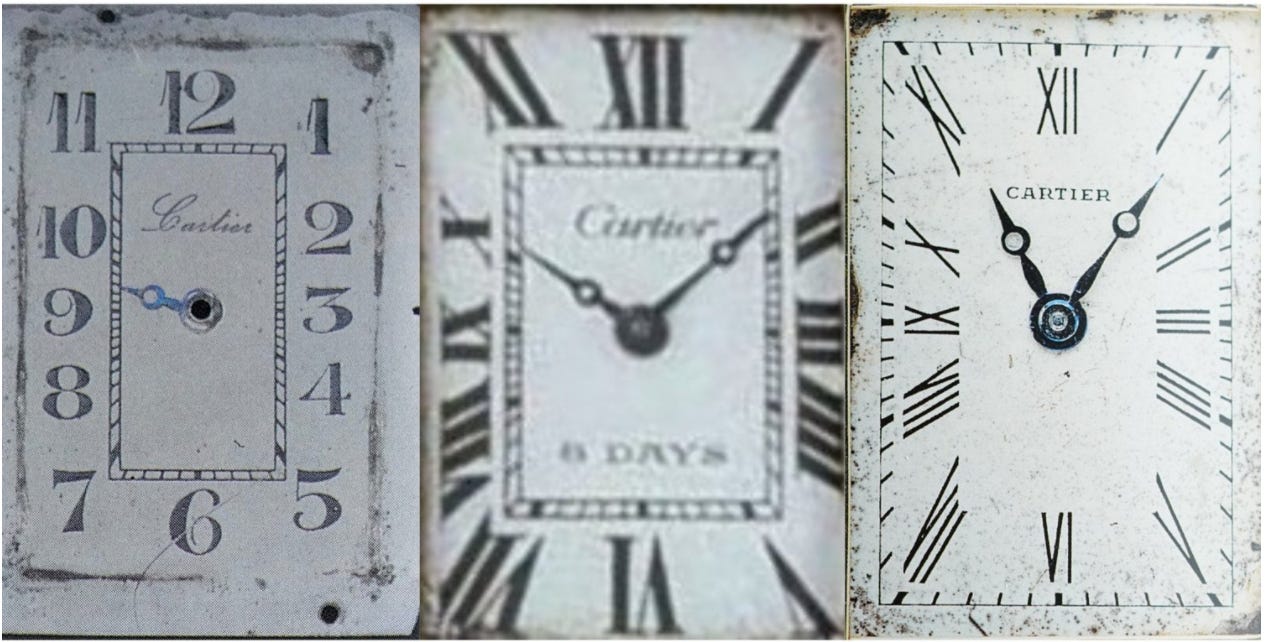Recommended: Every Known Cartier Eight-Day Wristwatch
An in-depth look at one of Cartier's most daring watchmaking achievements
Vintage Cartier Eight-Day wristwatches have always been a topic of fascination for many. For a house (nay, a Maison) known primarily as a jeweler, recognizable for its timeless designs, its early Eight-Day wristwatches represent true technical achievement and innovation. Beyond that, they’re exceedingly rare: It’s believed that less than 10 examples were produced.
Now, Charlie Dunne, a scholar and writer who needs no introduction to readers of Rescapement, has published an in-depth look at Each Known Cartier Eight-Day Wristwatch on his site, Strictly Vintage Watches.
What is a Cartier Eight-Day wristwatch? Well, back in the 1930s, Cartier pioneered a technically sophisticated caliber with an eight-day power reserve, with the help of its frequent technical collaborators at LeCoultre. The result was the large, twin-barrel LeCoultre caliber 124. Even today, luxury manufacturers brag about their calibers with 8-day movements, with most power reserves lasting a mere few days, if you’re lucky — imagine the technical prowess needed to produce this type of movement back in the 1930s.

It was no doubt an intense undertaking, hence why only a handful of examples have been found from Cartier; LeCoultre also produced these calibers for a few other high-end manufacturers, most notably Patek Philippe.
Even as appreciation for vintage Cartier has boomed over the last few years, little has been said about these vintage Eight-Day wristwatches. Sure, a yellow-gold example sold at Antiquorum Geneva for CHF 250,000 in November 2021, but it feels like other Cartier “shape watches” garner most of the headlines.
Charlie’s article sheds some light on the historically interesting and horologically important Cartier Eight-Day. He starts:
“According to Franco Cologni, Cartier introduced the Eight-Day Cartier wristwatch in [circa] 1931. It was a rich decade in which several models were born such as the Tank Étanche, the introduction of Cartier Reversos, as well as the introduction of stylized Vendôme lugs. However, many of the iconic timepieces have greatly overshadowed a small chapter within the prestigious retailer’s history. It is believed that less than 10 examples in all metals were produced, some of which would be sold years after the earliest models. While the exact details on production, case metal, and dates have changed over the years, this article will aim to provide context serving as an overview of these underappreciated timepieces.”
Of course, Francesca Cartier Brickell also provides some insight to put the importance of the Cartier Eight-Day wristwatch in context. She says: “The 1930s was a period of great innovation for the Cartiers — it was the decade when they patented more new products than any other. This was partly a result of the Great Depression which had severely hurt their business and forced them to come up with new and exciting products to tempt clients. It was also a time when high jewellery items…were considered inappropriate by many, so the Cartiers focused on more functional, practical pieces like watches (even if they were ones with a groundbreaking 8-day Lecoultre 124 movement!).”
We’ve spoken to Francesca before about Cartier’s driving ethos to “never copy, only create,” so it’s fascinating to see how, even during the depths of the Great Depression, it still pursued this spirit. But instead of pursuing the opulence of high jewelry, it led to pragmatic, technical innovations like the Eight Day.
The article digs into the history of the Cartier Eight-Day wristwatch, from its origins in Cartier’s magnificent clocks to the maison’s efforts to shrink down this watchmaking to fit into a wristwatch.

Then, it ticks through every known example of the Cartier Eight-Day, working through books, auction catalogs, and other source material to build the definitive history of one of Cartier’s most interesting watchmaking achievements.
For anyone interested in vintage Cartier, watchmaking, or just well-researched writing, you’re going to want to check out this piece. Check out the full article on Strictly Vintage Watches, and poke around Charlie’s other excellent writing while you’re at it.






